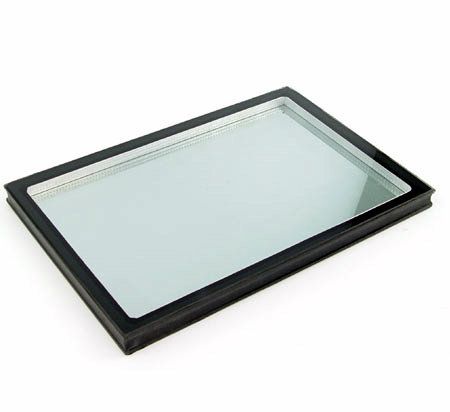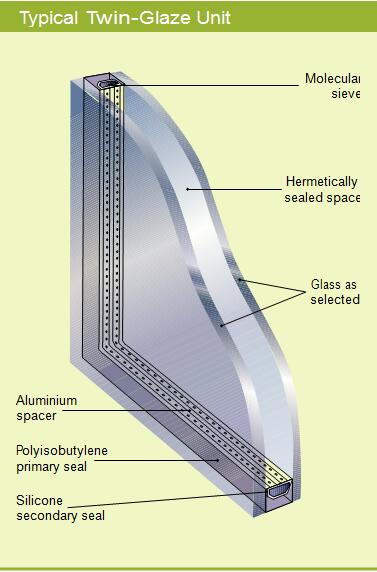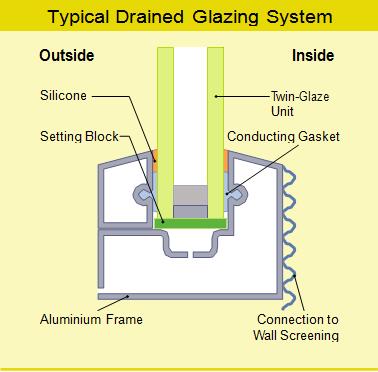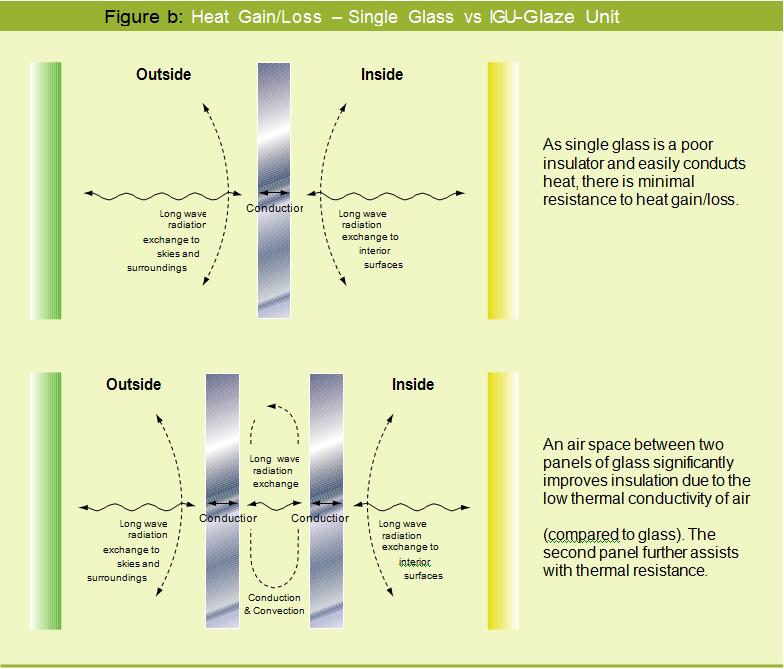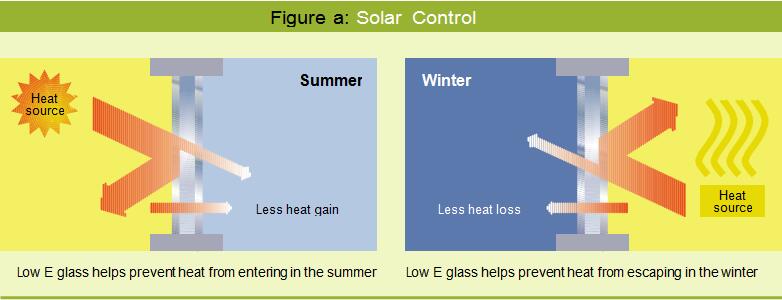The most common insulating glass unit is constructed with two plies of glass and one sealed air space. This configuration is a dual pane or double pane insulating glass unit, however is commonly shortened to insulating glass. Insulating glass is used due to the improvement in solar performance it provides. The most significant improvement is thermal performance (u-value) which improves by approximately 50% when compared to a monolithic glass ply. This improvement occurs whether the glass is coated or uncoated.
In addition to the improved solar performance, insulating glass offers a greater availability of coatings. Low-E coatings which cannot be exposed, and therefore cannot be used with monolithic glass, can be used inside the insulating unit where they are protected by the hermetically sealed space. Insulating units also have more aesthetic possibilities than monolithic glass.


